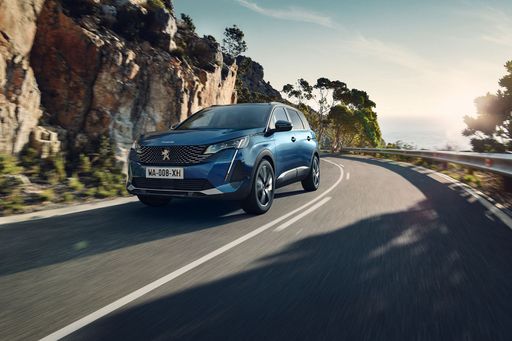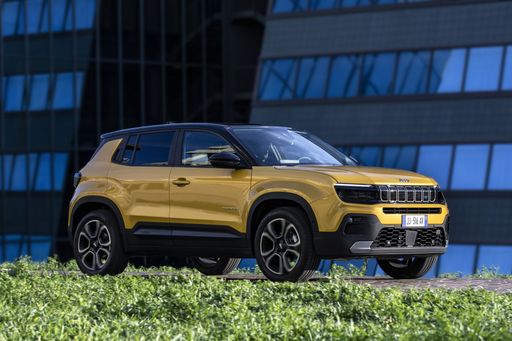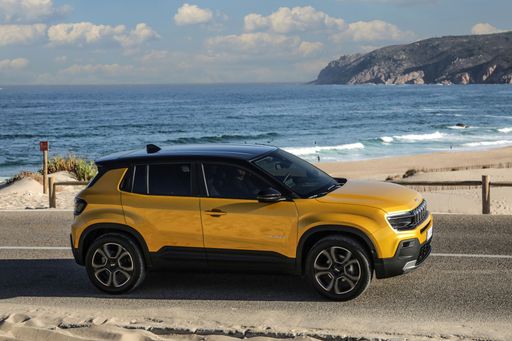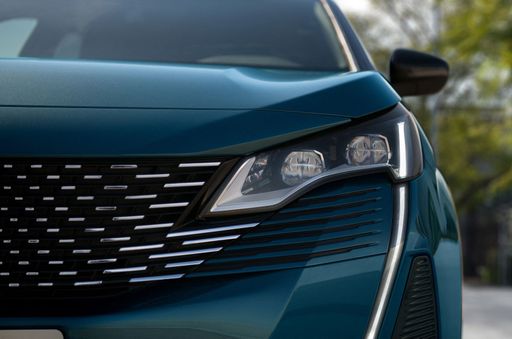Jeep Avenger vs Peugeot 5008 – Performance, range & efficiency compared
Everyday use, family trips or long-distance drives – here’s where the differences show.
Discover whether Jeep Avenger or Peugeot 5008 fits your lifestyle better.
Costs and Efficiency:
Price and efficiency are often the first things buyers look at. Here it becomes clear which model has the long-term edge – whether at the pump, the plug, or in purchase price.
Jeep Avenger has a clearly advantage in terms of price – it starts at 21900 £, while the Peugeot 5008 costs 37600 £. That’s a price difference of around 15652 £.
Fuel consumption also shows a difference: Peugeot 5008 manages with 1 L and is therefore decisively more efficient than the Jeep Avenger with 4.90 L. The difference is about 3.90 L per 100 km.
In terms of energy consumption, the advantage goes to the Jeep Avenger: with 15.50 kWh per 100 km, it’s slightly more efficient than the Peugeot 5008 with 17.80 kWh. That’s a difference of about 2.30 kWh.
As for range, the Peugeot 5008 performs convincingly better – achieving up to 674 km, about 274 km more than the Jeep Avenger.
Engine and Performance:
Under the bonnet, it becomes clear which model is tuned for sportiness and which one takes the lead when you hit the accelerator.
When it comes to engine power, the Peugeot 5008 has a significantly edge – offering 325 HP compared to 156 HP. That’s roughly 169 HP more horsepower.
In acceleration from 0 to 100 km/h, the Peugeot 5008 is evident quicker – completing the sprint in 6.50 s, while the Jeep Avenger takes 9 s. That’s about 2.50 s faster.
In terms of top speed, the Peugeot 5008 performs a bit better – reaching 220 km/h, while the Jeep Avenger tops out at 194 km/h. The difference is around 26 km/h.
There’s also a difference in torque: Peugeot 5008 pulls decisively stronger with 511 Nm compared to 260 Nm. That’s about 251 Nm difference.
Space and Everyday Use:
Cabin size, boot volume and payload all play a role in everyday practicality. Here, comfort and flexibility make the difference.
Seats: Peugeot 5008 offers evident more seating capacity – 7 vs 5.
In curb weight, Jeep Avenger is convincingly lighter – 1180 kg compared to 1700 kg. The difference is around 520 kg.
In terms of boot space, the Peugeot 5008 offers convincingly more room – 994 L compared to 380 L. That’s a difference of about 614 L.
In maximum load capacity, the Peugeot 5008 performs convincingly better – up to 2310 L, which is about 1033 L more than the Jeep Avenger.
When it comes to payload, Peugeot 5008 evident takes the win – 699 kg compared to 502 kg. That’s a difference of about 197 kg.
Who wins the race?
The Peugeot 5008 proves to be dominates this comparison and therefore becomes our DriveDuel Champion!
Peugeot 5008 is the better all-rounder in this comparison.

Peugeot 5008
Jeep Avenger
The Jeep Avenger is a compact SUV that brings a blend of rugged design and modern technology, making it ideal for both urban and off-road adventures. Its robust build and distinctive styling capture Jeep's iconic spirit while offering a comfortable and refined driving experience. With advanced safety features and a versatile interior, the Avenger caters to a wide range of drivers looking for practicality and excitement.
details @ Stellantis
@ Stellantis
 @ Stellantis
@ Stellantis
 @ Stellantis
@ Stellantis
 @ Stellantis
@ Stellantis
 @ Stellantis
@ Stellantis
Peugeot 5008
The Peugeot 5008 impresses with its sleek design and spacious interior, making it an appealing choice for families and those needing extra room. Its elegant exterior lines are complemented by a well-crafted cabin that offers both comfort and versatility, ideal for longer journeys or everyday use. With a range of modern features and technology, the 5008 delivers a balanced blend of style and functionality that enhances the driving experience.
details @ media.stellantis.com
@ media.stellantis.com
 @ media.stellantis.com
@ media.stellantis.com
 @ media.stellantis.com
@ media.stellantis.com
 @ media.stellantis.com
@ media.stellantis.com

|

|
|
|
|
Costs and Consumption |
|
|---|---|
|
Price
21900 - 36900 £
|
Price
37600 - 53600 £
|
|
Consumption L/100km
4.9 - 5.7 L
|
Consumption L/100km
1 - 5.6 L
|
|
Consumption kWh/100km
15.50 kWh
|
Consumption kWh/100km
17.8 - 18.6 kWh
|
|
Electric Range
400 km
|
Electric Range
79 - 674 km
|
|
Battery Capacity
51 kWh
|
Battery Capacity
0.4 - 96.9 kWh
|
|
co2
0 - 129 g/km
|
co2
0 - 127 g/km
|
|
Fuel tank capacity
44 L
|
Fuel tank capacity
55 L
|
Dimensions and Body |
|
|---|---|
|
Body Type
SUV
|
Body Type
SUV
|
|
Seats
5
|
Seats
5 - 7
|
|
Doors
5
|
Doors
5
|
|
Curb weight
1180 - 1520 kg
|
Curb weight
1700 - 2406 kg
|
|
Trunk capacity
325 - 380 L
|
Trunk capacity
294 - 994 L
|
|
Length
4084 - 4088 mm
|
Length
4791 mm
|
|
Width
1776 mm
|
Width
1895 mm
|
|
Height
1527 - 1541 mm
|
Height
1694 mm
|
|
Max trunk capacity
1218 - 1277 L
|
Max trunk capacity
1815 - 2310 L
|
|
Payload
494 - 502 kg
|
Payload
534 - 699 kg
|
Engine and Performance |
|
|---|---|
|
Engine Type
Electric, Petrol, Petrol MHEV
|
Engine Type
Plugin Hybrid, Electric, Petrol MHEV
|
|
Transmission
Automatic, Manuel
|
Transmission
Automatic
|
|
Transmission Detail
Reduction Gearbox, Manual Gearbox, Dual-Clutch Automatic
|
Transmission Detail
Dual-Clutch Automatic, Reduction Gearbox
|
|
Drive Type
Front-Wheel Drive, All-Wheel Drive
|
Drive Type
Front-Wheel Drive, All-Wheel Drive
|
|
Power HP
100 - 156 HP
|
Power HP
145 - 325 HP
|
|
Acceleration 0-100km/h
9 - 10.6 s
|
Acceleration 0-100km/h
6.5 - 10.2 s
|
|
Max Speed
150 - 194 km/h
|
Max Speed
170 - 220 km/h
|
|
Torque
205 - 260 Nm
|
Torque
230 - 511 Nm
|
|
Number of Cylinders
3
|
Number of Cylinders
3 - 4
|
|
Power kW
74 - 115 kW
|
Power kW
107 - 239 kW
|
|
Engine capacity
1199 cm3
|
Engine capacity
1199 - 1598 cm3
|
General |
|
|---|---|
|
Model Year
2023 - 2025
|
Model Year
2024 - 2025
|
|
CO2 Efficiency Class
A, D, C
|
CO2 Efficiency Class
B, A, D
|
|
Brand
Jeep
|
Brand
Peugeot
|
What drivetrain options does the Jeep Avenger have?
Available configurations include Front-Wheel Drive or All-Wheel Drive.
The prices and data displayed are estimates based on German list prices and may vary by country. This information is not legally binding.
